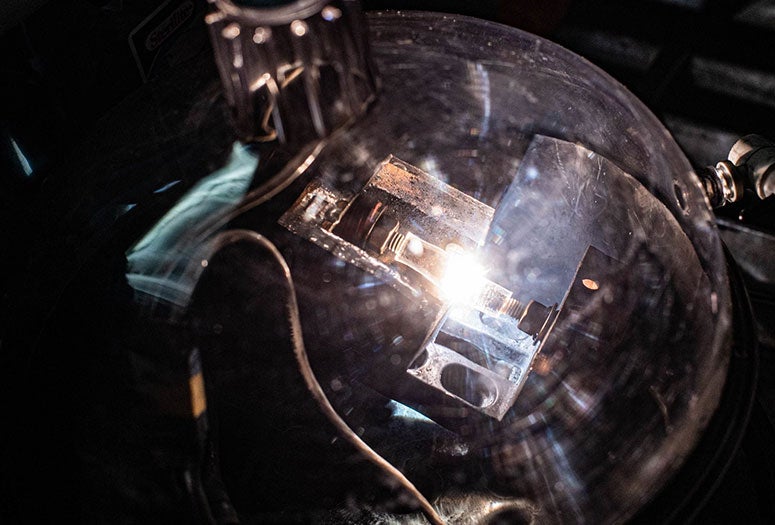HOUSTON – (March 31, 2022) – Flashing graphene into existence from waste was merely a good start. Now Rice University researchers are customizing it.
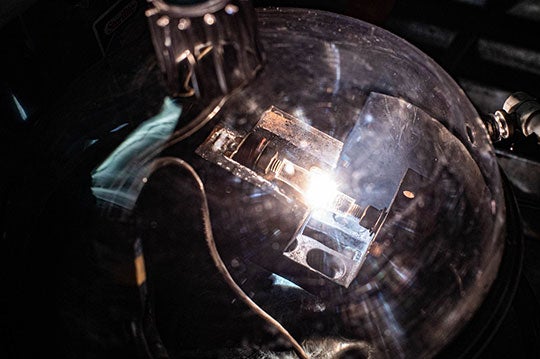
The Rice lab of chemist James Tour has modified its flash Joule heating process to produce doped graphene that tailors the atom-thick material’s structures and electronic states to make them more suitable for optical and electronic nanodevices. The doping process adds other elements to graphene’s 2D carbon matrix.
The process reported in the American Chemical Society journal ACS Nano shows how graphene can be doped with a single element or with pairs or trios of elements. The process was demonstrated with single elements boron, nitrogen, oxygen, phosphorus and sulfur, a two-element combination of boron and nitrogen, and a three-element mix of boron, nitrogen and sulfur.
The process takes about one second, is both catalyst- and solvent-free, and is entirely dependent on “flashing” a powder that combines the dopant elements with carbon black.
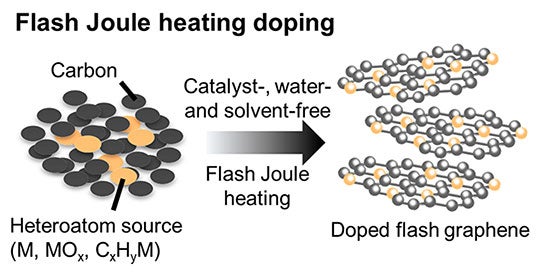
Doping graphene is possible through bottom-up approaches like chemical vapor deposition or synthetic organic processes, but these usually yield products in trace amounts or produce defects in the graphene. The Rice process is a promising route to produce large quantities of “heteroatom-doped” graphene quickly and without solvents, catalysts or water.
“This opens up a new realm of possibilities for flash graphene,” Tour said. “Once we learned to make the original product , we knew the ability to directly synthesize doped turbostratic graphene would lead to many more options for useful products. These new atoms added to the graphene matrix will permit stronger composites to be made since the new atoms will bind better to the host material, such as concrete, asphalt or plastic. The added atoms will also modify the electronic properties, making them better-suited for specific electronic and optical devices.”
Graphene is turbostratic when stacks of the 2D honeycomblike lattices don’t align with one another. This makes it easier to disperse the nanoscale sheets in a solution, producing soluble graphene that is much simpler to incorporate into other materials, Tour said.
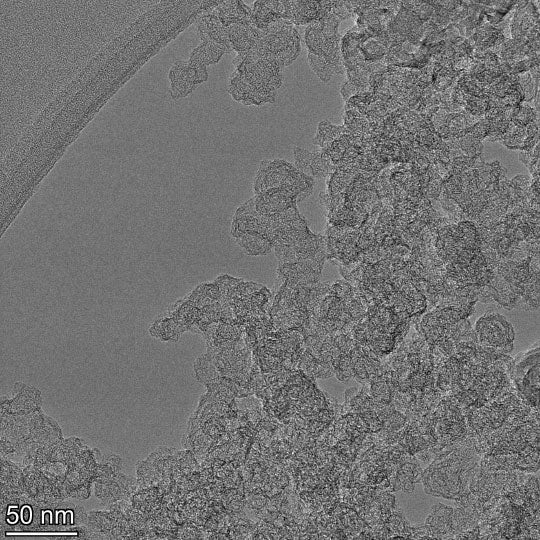
The lab tested various doped graphenes in two scenarios: electrochemical oxygen reduction reactions (ORR) that are key to catalytic devices like fuel cells, and as part of an electrode in lithium metal batteries that represent the next generation of rechargeable batteries with high energy densities.
Sulfur-doped graphene proved best for ORR, while nitrogen-doped graphene proved able to reduce nucleation overpotential during the electrodeposition of metallic lithium. That should facilitate more uniform deposition and improved stability in next-generation rechargeable metal batteries, the lab reported.
Rice graduate students Weiyin Chen and Chang Ge are co-lead authors of the paper. Co-authors are alumnus John Tianci Li, graduate students Jacob Beckham, Kevin Wyss, Paul Advincula, Lucas Eddy and Jinhang Chen, undergraduate Robert Carter, postdoctoral researcher Zhe Yuan, research scientist Carter Kittrell and alumnus Duy Xuan Luong.
The research was supported by the Air Force Office of Scientific Research (FA9550-19-1-0296), the Department of Energy-National Energy Technology Laboratory (DE-FE0031794) and the U.S. Army Corps of Engineers’ Engineer Research and Development Center (W912HZ-21-2-0050).
-30-
- Peer-reviewed paper
-
“Heteroatom-Doped Flash Graphene,” ACS Nano
- Image downloads
-

https://news-network.rice.edu/news/files/2022/03/0331-DOPED-flash-lg.jpg
CAPTION: Rice University chemists have modified their flash Joule heating process to produce doped graphene with tailored properties for optical and electronic devices. The flash graphene method can turn any source of carbon into valuable 2D materials in milliseconds. (Photo by Jeff Fitlow/Rice University)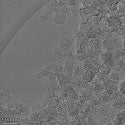
https://news-network.rice.edu/news/files/2022/03/0331-DOPED-tem-lg.jpg
CAPTION: A transmission electron microscope image of flash graphene co-doped with boron and nitrogen. (Photo by Weiyin Chen//Rice University)
https://news-network.rice.edu/news/files/2022/03/0331-DOPED-fig-lg.jpg
CAPTION: Rice University chemists have created a catalyst- and solvent-free flash Joule heating process for manufacturing bulk quantities of doped graphene with tailored properties for optical and electronic nanodevices. (Figure courtesy of the Tour Lab/Rice University) - Related links and stories
-
Rice Lab turns trash into valuable graphene in a flash – Jan. 27, 2020 – Rice News
Machine learning fine-tunes flash graphene – Jan. 31, 2022 – Rice News
Tour Group: jmtour.com
Department of Chemistry: chemistry.rice.edu
Wiess School of Natural Sciences: naturalsciences.rice.edu
Follow Rice News and Media Relations via Twitter @RiceUNews
- About Rice
-
Located on a 300-acre forested campus in Houston, Rice University is consistently ranked among the nation’s top 20 universities by U.S. News & World Report. Rice has highly respected schools of Architecture, Business, Continuing Studies, Engineering, Humanities, Music, Natural Sciences and Social Sciences and is home to the Baker Institute for Public Policy. With 4,052 undergraduates and 3,484 graduate students, Rice’s undergraduate student-to-faculty ratio is just under 6-to-1. Its residential college system builds close-knit communities and lifelong friendships, just one reason why Rice is ranked No. 1 for lots of race/class interaction and No. 1 for quality of life by the Princeton Review. Rice is also rated as a best value among private universities by Kiplinger’s Personal Finance.

